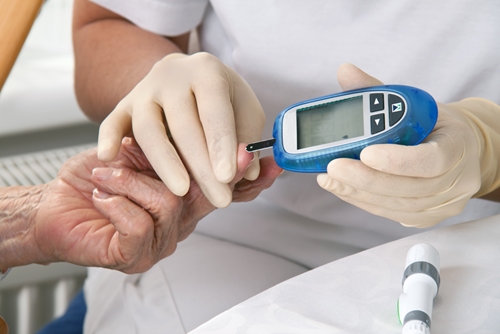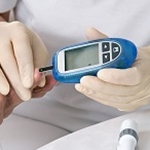Researchers Develop Novel Method for Painless Insulin Delivery
Diabetes can be characterized as either type 1, an autoimmune disease where an individual’s immune cells destroy the beta cells of the pancreas, or type 2, where individuals cannot produce enough insulin and use it properly. People that suffer from diabetes experience high blood glucose that can result in blindness, kidney failure, nerve damage, heart attack, stroke and in extreme cases can lead to coma and death. The only treatment available is insulin therapy through injection or insulin infusion with a mechanical pump.
It is estimated that around 400 million people worldwide suffer from diabetes and lifelong management of the disease with insulin can be difficult. Blood glucose fluctuates throughout the day and in response to many factors, requiring individuals to closely monitor their blood glucose and adjust insulin treatment. Too much insulin can lead to hypoglycemia, while too little insulin can lead to hyperglycemia, both of which have serious side effects. Since this balancing act can be challenging to maintain, alternative treatments and improvements in treatment have been widely studied.
 One of the many challenges researchers have experienced in treating diabetes has been in creating a system that responds quickly, is easy to use, and is biocompatible. Current closed-loop, glucose response systems, such as insulin infusion pumps, do not always provide accurate signal feedback and users can experience biofouling or contamination of the pump with microorganisms. Researchers at the University of North Carolina (UNC) and North Carolina State University (NCSU) have developed a new method of insulin delivery that utilizes a microneedle-array patch. This “smart insulin patch” was recently described in PNAS.
One of the many challenges researchers have experienced in treating diabetes has been in creating a system that responds quickly, is easy to use, and is biocompatible. Current closed-loop, glucose response systems, such as insulin infusion pumps, do not always provide accurate signal feedback and users can experience biofouling or contamination of the pump with microorganisms. Researchers at the University of North Carolina (UNC) and North Carolina State University (NCSU) have developed a new method of insulin delivery that utilizes a microneedle-array patch. This “smart insulin patch” was recently described in PNAS.
A Smarter Way to Treat Diabetes
The insulin patch created by Dr. Zhen Gu and colleagues at UNC and NCSU is comprised of 121 microneedles loaded with vesicles containing insulin and glucose oxidase. Glucose oxidase is activated in the presence of high levels of glucose and leads to the consumption of oxygen. These vesicles are designed to be sensitive to the hypoxic condition created by glucose oxidase and trigger the release of insulin. Hence, this smart patch can recognize a hyperglycemic state and rapidly release insulin in response. In vivo, the insulin patch was tested on type 1 diabetic mice. The mice treated with the insulin patch demonstrated a decrease in blood glucose followed by the initiation of a normoglycemic state for up to four hours. Furthermore, mice treated with the patch never reached a hypoglycemic state indicating that this system also allows for self-regulated monitoring of glucose levels and safe insulin delivery.
While the patch is in the early stages of development, this novel approach to monitoring glucose levels and delivering insulin holds promise for rapid and painless treatment of diabetes, as well as great potential in treating other diseases that may benefit from the use of a self-regulating, vesicle delivery system.
Related Products



